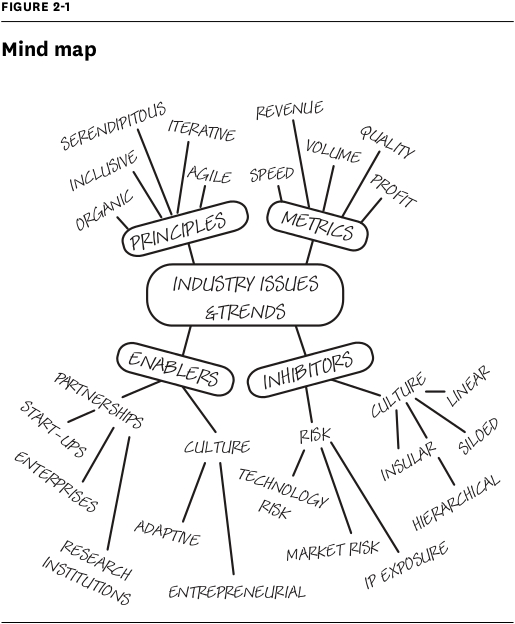Generate Content to Support the Big Idea
Now that you’ve articulated your big idea, it’s time to create your content, but don’t fire up your presentation software quite yet. Software forces linear thinking—one slide after another—so it’s not the best tool for early brainstorming.
Instead, change up your usual environment. Move to a new room, turn off your e-mail and cell phone, maybe play some music. Use tactile tools like paper, whiteboards, and sticky notes.
Generate as many ideas as possible by:
- Gathering existing content: You don’t have to start from scratch. Dig up other presentations, industry studies, news articles, reports, surveys—anything that’s relevant to your big idea.
- Building on existing content: Push on the ideas in the content you’ve gathered. Challenge them, or consider them from a new angle. Draw new connections.
- Creating new content: Be curious, take risks, and let your intuition guide you. Experiment and dream.
For brainstorming to be successful, you have to suspend judgment and stay receptive to seemingly unrelated ideas—they may lead to something great. Increase your creative yield by moving back and forth between brain-storming alone and brainstorming in a group.
Brainstorm alone
It’s intimidating to approach a blank piece of paper or whiteboard, but you have to start somewhere. Write down a key word and riff off that. Let your mind move in random directions. Then draw connections with lines. Keep brainstorming until you have a messy web of concepts and relationships to explore. This is called mind mapping (see figure 2-1). You can get special software to do it, but paper or sticky notes will work just as well.
Brainstorm in a group
When you work with others, you get more gems to choose from—and someone else’s idea may spark even more creative ones in you. Be extra kind to the folks with enough guts to put half-baked or embarrassing ideas out there. Treat every idea as valuable. Have someone facilitate and capture the ideas so the discussion can move at a fast clip (if it slows down, people will start to question and censor themselves). Or ask brainstormers to scribble ideas on sticky notes and post them on a wall. Sticky notes are the perfect brainstorming tool. They’re small, convenient, and moveable—great for collecting and organizing material. Limit yourselves to one idea per sticky note so it’s easier to sort and cluster thoughts.
Brainstorm alone again
Take the seeds of ideas that came from the rapid-fire group session and do another round of quiet brainstorming on your own. This will give those latent ideas a chance to develop.
Go for quantity, not quality. You may work your way through five, ten, twenty ideas until you find ones that are distinctive and memorable. This is not the time to edit yourself. Even if an idea has been expressed or used before, add it to the mix. You may later find a unique way of incorporating it.

